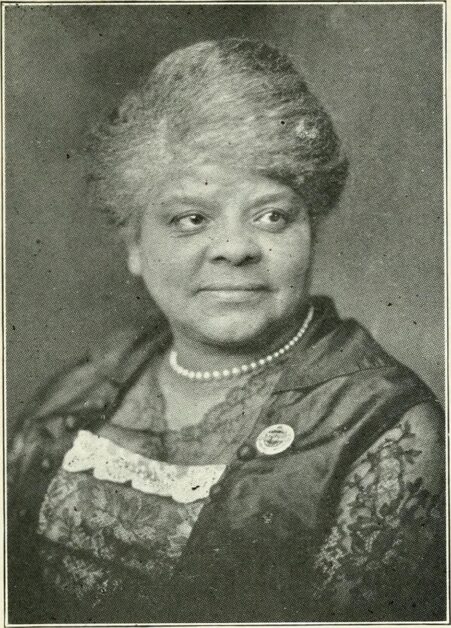Ida B. Wells (full name Ida B. Wells-Barnett) was an African-American journalist and activist who spearheaded the anti-lynching movement in the United States during the 1890s.
She played an integral role in founding and leading groups that strived for African-American justice throughout her life. She was born July 16, 1862, in Holly Springs, Mississippi, and passed away March 25, 1931 (aged 68) in Chicago, Illinois.
The early life of Ida B. Wells
Ida B. Wells was born into slavery and educated at Rust University, a freedmen’s school in Holly Springs, Mississippi. At 14, she started teaching at a country school and continued a successful career as an educator even after moving to Memphis, Tennessee, in 1884. There, she attended Fisk University in Nashville.
1887 – Court case and entry into journalism
In 1887, Wells took legal action against the Chesapeake & Ohio Railroad for being forcibly removed from her seat after refusing a seat in the “colored only” car. Wells took this to a local court and won $500 in compensation. However, the Tennessee Supreme Court reversed the Circuit Court decision, ruling against Wells.
In 1891, Wells began using the pen name Iola to write newspaper articles that were critical of the lack of education available to African-American children.
When her teaching contract was not renewed, she turned to journalism as a way to continue her activism. Eventually, she developed an interest in the 1881 African-American newspaper, the Memphis Free Speech.
1892 – Lynchings and early work
In 1892, three of Wells’ friends were lynched by a mob. This led Wells to begin an editorial campaign against lynching, which quickly resulted in the trashing of her newspaper’s office.
However, Ida B. Wells didn’t back down. She continued her anti-lynching crusade as a freelancer, writing for newspapers such as the New York Age and then becoming a lecturer and an organizer of anti-lynching societies. Wells also traveled to several U.S. cities and even overseas to Great Britain to spread her cause.
Throughout her travels and studies, she used statistics and quantitative data to help reach her conclusions that would form the basis of her campaign messages. She found that the “idea of rape and even criminal behavior is not so much connected to lynching, but that lynching was a means to keep blacks—who were very economically competitive at this point—to keep blacks down.” She also discovered that when black men were accused of rape, it was usually consensual sex with white women.
1895 – Marriage
Ida B. Wells released her conclusions, but they sparked violence and riots while she lived in Philadelphia. It became dangerous for her to return to Memphis, so she decided to continue traveling across the U.S. and also Europe to spread her findings around the lynchings. However, Wells eventually settled in Chicago. Wells found that there were many Black political organizations, newspapers, and interracial activism which she could participate in.
Wells married in 1895 to Ferdinand L. Barnett, a Chicago lawyer, editor, and public official. She adopted the name Wells-Barnett. She began to travel less but still maintained an active stance against lynching, involving herself with many of Chicago’s affairs. Wells contributed to the Chicago Conservator, the newspaper that her husband owned. She also worked with other local journals, publishing detailed articles that covered lynchings while helping to rally local African American women to various causes.

1898 – Secretary of the Afro-American Council
After 1898, Ida Wells-Barnett served as secretary of the National Afro-American Council. She took part in the Niagara Movement in 1909 and went on to help found the National Association for the Advancement of Colored People (NAACP).
Wells-Barnett eventually became a member of the executive committee at NAACP but distanced herself after becoming dissatisfied with its white and elite Black leadership.
Wells-Barnett would go on to investigate the brutal assaults of the African-American community in Springfield in 1908, and she worked with the National Equal Rights League to call for President Woodrow Wilson to put an end to discriminatory hiring practices for government jobs.
1910 – First President of the Negro Fellowship League
In 1910, Wells-Barnett went on to found and became the first president of the Negro Fellowship League. This organization aimed to help new migrants from the South integrate within their communities. In 1913, she also founded the Chicago Alpha Suffrage Club–possibly one of the very Black women’s suffrage groups. During the same period, Wells also achieved many firsts for the Black community in Chicago. She opened the first Black women’s club and the first Back kindergarten.
From 1913 to 1916, she was a probation officer of the Chicago municipal court. Although she was known for her militant beliefs, her fervor and insistence became a strength that helped her rise in popularity. Wells-Barnett remained in Chicago for the rest of her life, continuing her political activism and even running for the Illinois State Senate seat as an independent. While she didn’t win, she became a beacon of hope and progress for the Black community.
How Ida B. Wells is celebrated today
In July 2018, Chicago named a street after Ida B. Wells. In the same month, activists raised a total of $300,000 which was used to e#### a monument to Wells-Barnett. It was unveiled in 2021 and given the official name “The Light of Truth Ida B. Wells National Monument.” It was created by sculptor Richard Hunt and was dedicated in the South Side neighborhood where Wells-Barnett spent most of her life.
In addition, Wells-Barnett was turned into a Barbie doll in 2022. The Ida Wells-Barnett doll is the Barbie brand’s latest edition in their Inspiring Women collection.
Ida Wells-Barnett continues to be an inspiration to the Black community in America and across the world and is hailed for her work in investigating the lynchings of Black people in Memphis.
